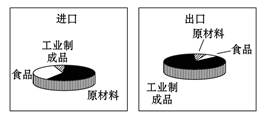问题
单项选择题
已知二叉树BT的后序遍历序列是dabec,中序遍历序列是debac,它的前序遍历序列是 ______。
A.cedba
B.acbed
C.decab
D.deabc
答案
参考答案:A
解析:[知识点] 树的遍历[评析] 二叉树BT的后序遍历序列为dabec,故BT的根结点为c(后序遍历序列的最后一个结点为数的根结点);而BT的中序遍历序列是debac,即遍历序列中最后一个结点为跟结点,说明BT的右子树为空。由BT的的后序遍历序列和中序遍历序列可知BT的左子树(LST)的后序遍历序列和中序遍历序列分别为dabe和 deba(树是递归定义的):故LST的根结点是e,在由LST的中序遍历序列可知其左子树为d。因此BT的前序遍历序列为cedba。

